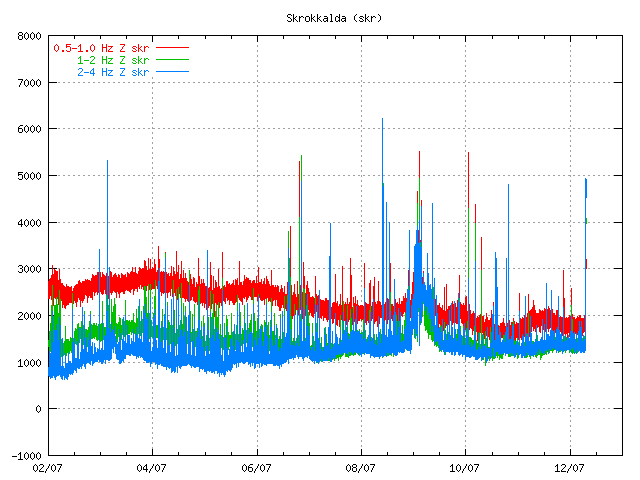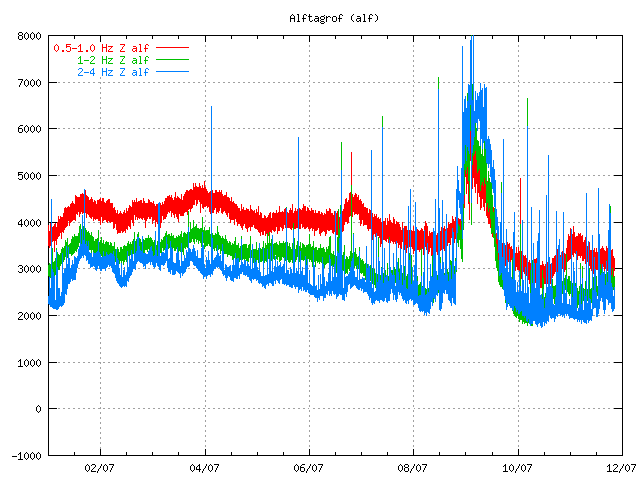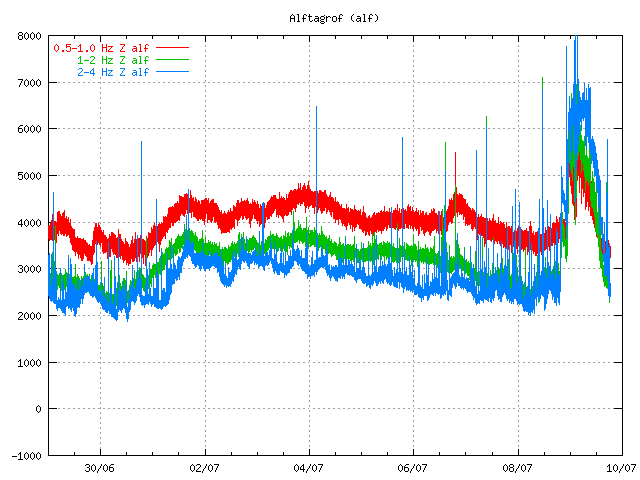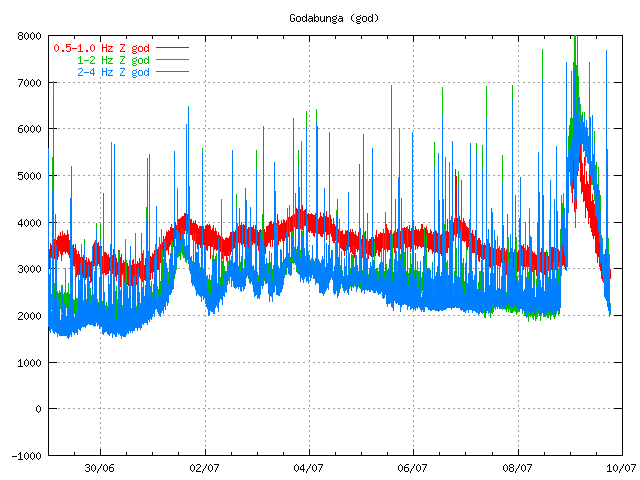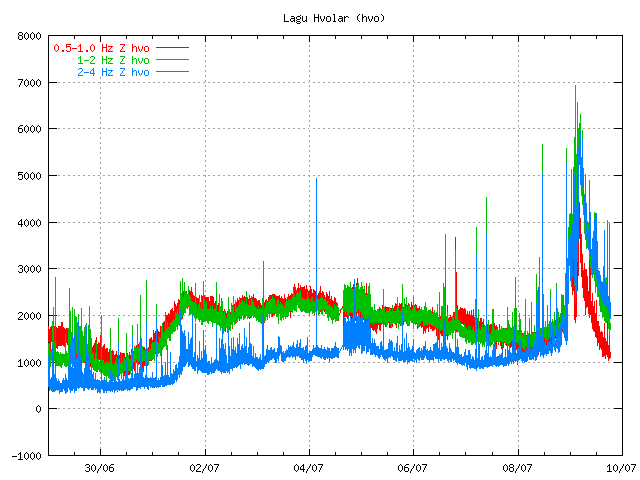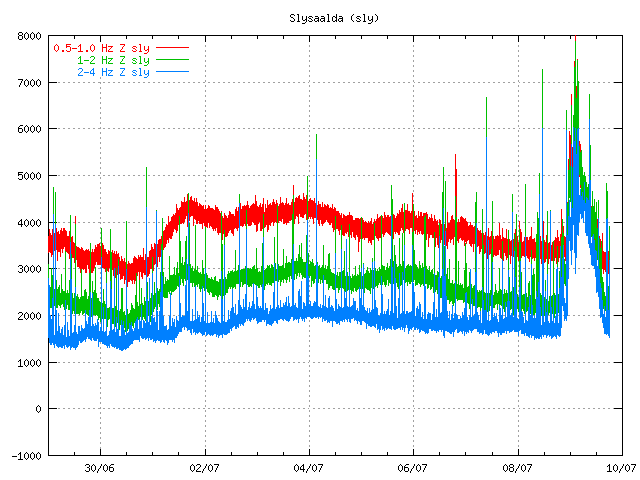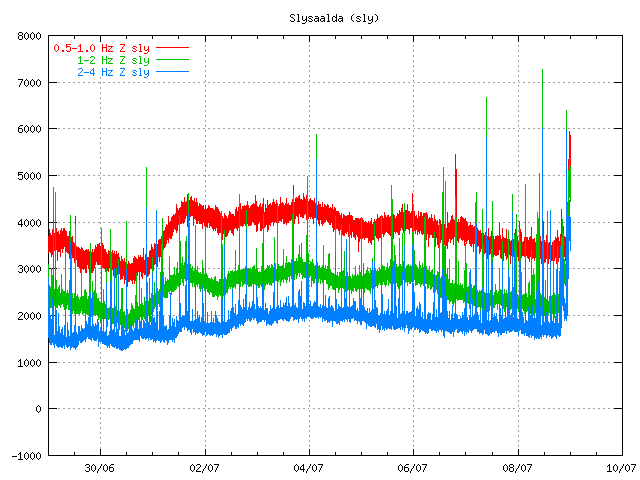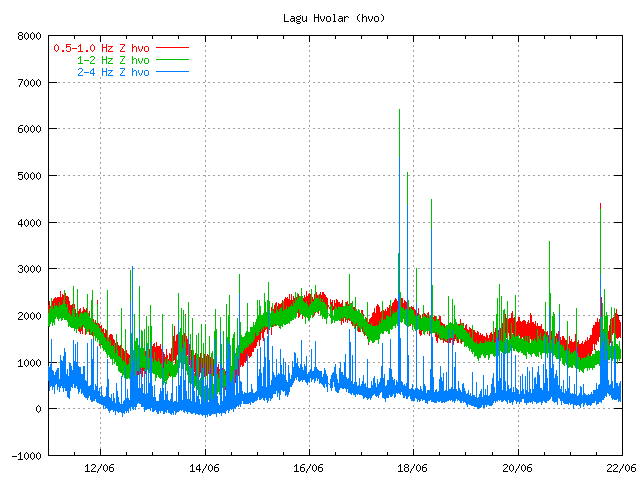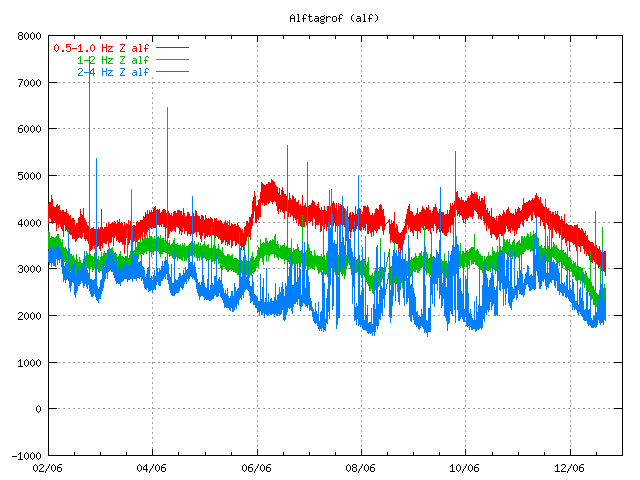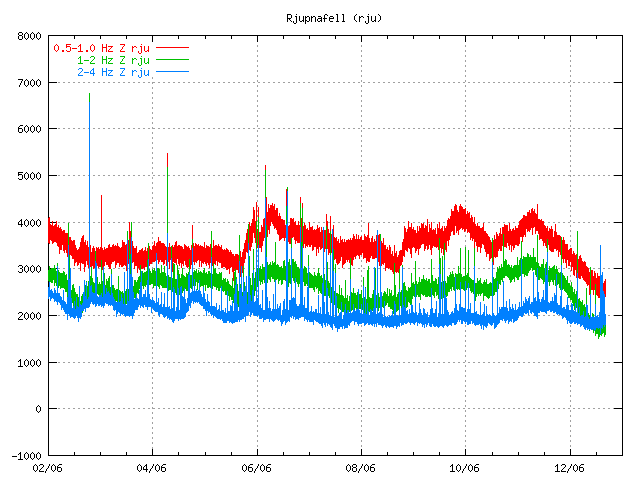At the moment there is an ongoing harmonic tremor going on in Katla volcano. It is just an small one, just above the background level noise floor. This is most likely an small dike intrusion. But nothing in the data from Icelandic Met Office suggests that an eruption has started in Katla volcano at this stage. But that might change without an warning, since this is an volcano after all. This change in harmonic tremor does not seems to be created by an glacier flood of some type. What is interesting is that this harmonic tremor pulse looks like an harmonic tremor pulse detected in the year 1999, just before an small eruption took place in Katla volcano southern caldera rim.
This harmonic tremor is in the high frequency range at the moment. But no change has been seen in the low frequency range at the moment. This is the same thing that did happen in the year 1999. At the moment however it is too early to know what is going to happen in Katla volcano for sure. All that can be done is to watch and wait. This might quiet down, or it might not. Only time is going to tell us what happens next. At the moment the harmonic is falling at fast rate, so this might be over.
Before the harmonic tremor pulse there was an earthquake swarm in Katla volcano caldera. The largest earthquake was ML2.1 and that was an long period event, but that tells me that magma was the source of this earthquakes in Katla volcano caldera. There where two earthquake swarms in the caldera today, but that makes total of three earthquake swarms in the Katla volcano caldera since the beginning of June.

The two earthquake swarms that took place in Katla volcano caldera today. Copyright of this picture belongs to Icelandic Met Office.
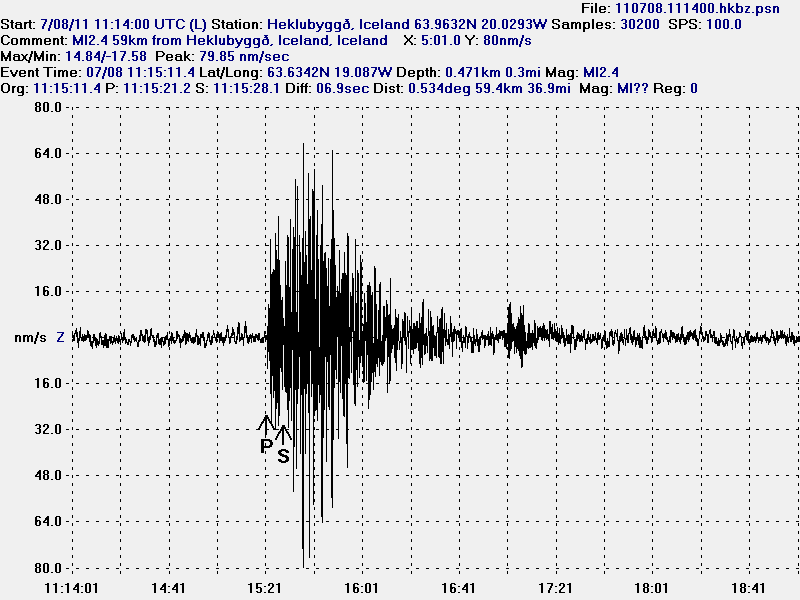
The only earthquake that I did record out of this earthquake swarm. This earthquake was ML2.40 with the depth of ~400 meters. This plot is filtered at 1Hz . This picture is released under Creative Common licence. See Licence web page for more detail.

Spectrogram of the ML2.4 earthquake in Katla volcano from this morning. This is filtered from 1Hz. This picture is released under Creative Common licence. See Licence web page for more detail.

Harmonic tremor can clearly be seen at the end of this tremor chart from the Icelandic Met Office. Copyright of this picture belongs to Icelandic Met Office.
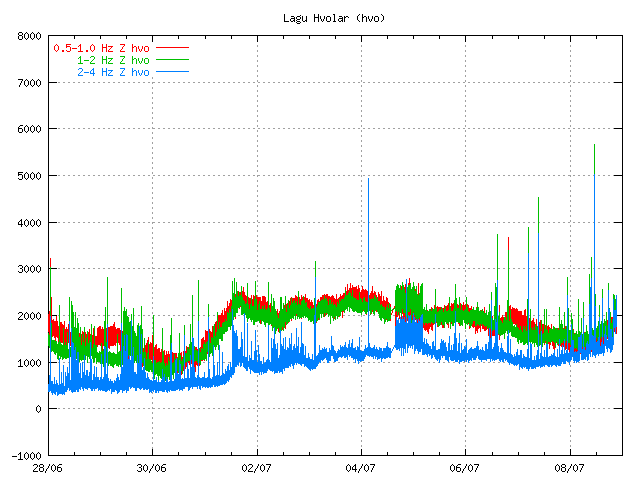
Harmonic tremor can be seen at the end of this tremor chart from the Icelandic Met Office, but it is not clear at this SIL station. Copyright of this picture belongs to Icelandic Met Office.
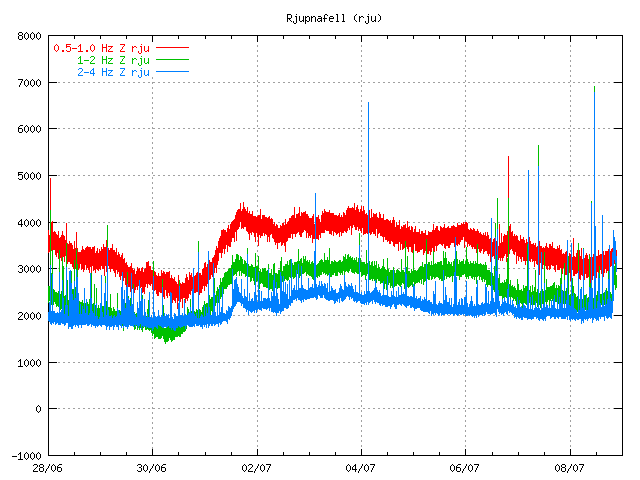
Harmonic tremor can clearly be seen at the end of this tremor chart from the Icelandic Met Office. Copyright of this picture belongs to Icelandic Met Office.
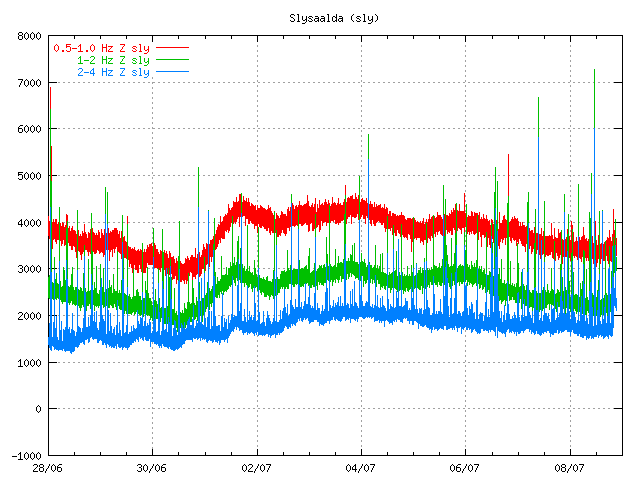
Harmonic tremor can clearly be seen at the end of this tremor chart from the Icelandic Met Office. Copyright of this picture belongs to Icelandic Met Office.
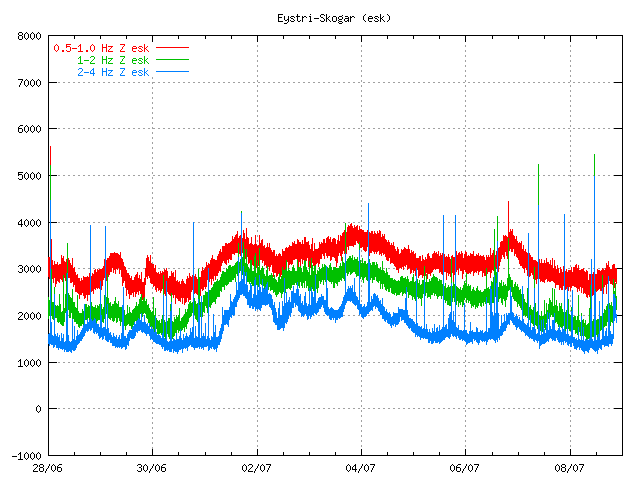
Harmonic tremor can be seen (not clearly) at the end of this tremor chart from the Icelandic Met Office. Copyright of this picture belongs to Icelandic Met Office.

Harmonic tremor can clearly be seen at the end of this tremor chart from the Icelandic Met Office. Copyright of this picture belongs to Icelandic Met Office.
The harmonic tremor is strong enough on many SIL station to go above the background noise level on the SIL stations (wind, ocean waves etc..). But this is not an strong harmonic tremor. They can be stronger.
This does NOT mean an eruption is imminent in Katla volcano. What this does mean that is an magma is on the move inside the Katla volcano. What happens at later time is something that nobody can guess at current time. But it is now time to watch Katla volcano even closer.
It is also important to notice that nobody really knows how Katla volcano behaves before an eruption. We only get those answers after an eruption in Katla volcano. For the moment we can only wait and see what happens in Katla volcano.
I am going to post more updates if anything interesting happens. Also, there seems to have been an Long period earthquake at 22:14 UTC, most likely in Katla volcano. It appeared on my geophone close to Hekla volcano. I am guessing the size of this earthquake is ML2.0+.
Blog post updated at 22:39 UTC. Spectrogram picture added.

